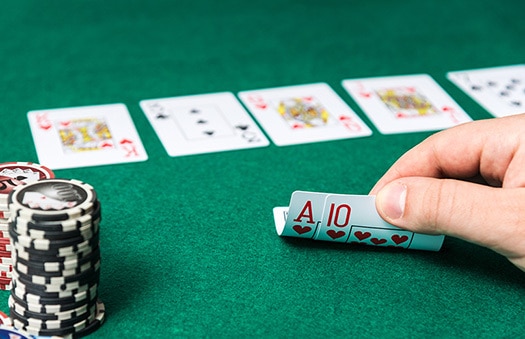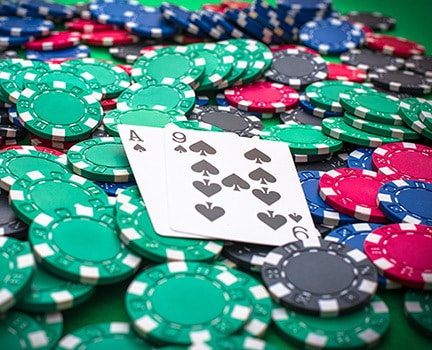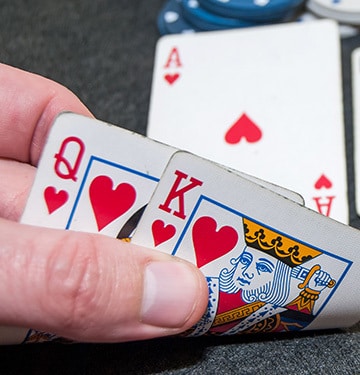-
Promotions
- Loyalty
- Welcome Bonus
- Fish Buffet
- Honeymoon for Newcomers
- Daily Promos
- $10M May Cash Giveaway
- Daily Freebie
- Mystery Envelope
- Daily Leaderboards
- Hold’em Daily Leaderboard
- PLO/PLO-5 Daily Leaderboard
- Rush & Cash Daily Leaderboard
- All-in or Fold Daily Leaderboard
- Spin & Gold Daily Leaderboard
- Short Deck Daily Leaderboard
- Flip&Go Daily Leaderboard
- Mystery Battle Royale Daily Leaderboard
- Signature
- GGCare & GGCheers
- Rush & Cash Friday
- Bubble Protection
- Spin & Gold Challenge
- Jackpots
- Bounty Jackpot
- Bad Beat Jackpot Rebirth
- All-In Fortune
- All-In or Fold Jackpot
- GGTeam
- Tournaments
-
WSOP
- WSOP
- WSOP Champions
- WSOP Bracelets
- WSOP Online
- WSOP Online 2023
- WSOP Online 2022
- WSOP Online 2021
- Road to WSOP
- Road to Vegas
- Road to WSOP Europe
- WSOP Online Circuit
- WSOP Summer Circuit 2023
- WSOP Spring Circuit 2023
- WSOP Winter Circuit 2022
- Blog
-
How to Play
- Get Started
- Poker School
- House Rules
- Cash Game
- Texas Hold’em
- Omaha
- 6+ Short Deck
- Unique Features
- Spin & Gold ELO
- Splash
- EV Cashout
- NFT Avatars
- Final Table Betting
- Social Features
- Staking Platform
- Smart HUD
- Smart Betting
- PokerCraft
- Final Table Features
- Card Squeeze
- Prop Bet
- Exclusive Games
- AoF Sit & Go
- All-In or Fold
- Mystery Battle Royale
- Spin & Gold
- Rush & Cash
- Flip & Go Renewal
- Funds
- Deposit & Withdrawal
- Real Money Poker
- Partners
- About Us
- Help
- Legal
- Safety & Security
The Beginners Guide Series: How to Play a Flush Draw
- Posted on
- Posted Under Beginner Strategy

Once you’ve been playing poker for a while, or been studying, learning and practicing the game, you will invariably have been in a situation where you are sitting with a flush draw. In these situations, sometimes in an important spot, you are faced with a difficult decision. Regardless of when you find yourself with a flush draw at the poker table, more often than not you finish the hand wondering if you played the right way or what you could have done differently.
Sitting with a flush draw is one of the better feelings in poker. It feels like you have a monster, ready to win a massive pot. However, if you’re not careful or just misstep even a little, it could cost you a huge stack. Flush draws can be tricky to play which is why we will be discussing them further here. We will focus on some of the better strategies and tips for playing a flush draw so you can adjust or develop your own strategy for when it is needed.
The chance of a suited hand hitting a flush on the flop is only 1%. However, the chance of flopping a flush draw is a massive 11%. It’s for that reason we spend time studying to learn the necessary skills and strategies for playing a flush draw, to maximize our chances of winning while minimizing any losses.

Different Types of Draws
The first thing we need to know about flush draws is not all draws are the same. One of the most common mistakes that a beginner can make in poker when sitting with a flush draw is not valuing their hand correctly. Less experienced players will fail to consider their hand equity versus their opponents’ hand. To make the best decision, you need to consider the entirety of the situation; is the board paired, does your opponent have a strong or weak range, how often can your opponent have a bigger flush draw, are you protecting your checking range, what ‘value hands’ are you representing, how much equity does your hand have against your opponents range? These are some of the questions and thoughts that you should ask when sitting on a flush draw. The answers will not always be the same which should help you realize that each flush draw is different and needs to be handled differently.
When you find yourself with a flush draw, you are almost always an underdog against any made hand, but that doesn’t stop many rookies from playing suit junk on the chance of hitting an elusive flush. Playing any two-suited cards hoping for a flush or flush draw is a surefire way to lose your stack.
Strong Draws
Raising with a flush draw is rarely a mistake; however, when your opponent plays back aggressively, you will find yourself in a tough spot, particularly when you have a weaker draw. This is not to suggest that you should always play every non-nut flush draw passively, but instead to separate the flush draws into two basic categories: strong and weak. Strong draws are any Ace or King high draws when both cards are bigger than the board such as K♠️ 8♠️ on a flop of 5♠️ 3♠️ 2♥️. Weak draws are anything else.
If you face a 3-bet after raising a big draw, the situation is more favorable than when you hold a weak flush draw that your opponent could bluff you off of or have a dominating hand. Thus, it’s important to assess each situation individually and consider the circumstances. When deciding between draws, prioritize raising strong ones and calling or folding weaker draws.

Weak Draws
When you are playing poker, as your stack size becomes shorter, the game changes and requires a different strategy. Rather than being focused on building a massive pot, it becomes crucial to think about protection and equity denial. Your opponents can easily force you to make an all-in decision, so it’s important to be cautious with c-betting and barreling with draws, as it is better to focus more on pot control and protection.
When you have a weak flush draw that can easily be dominated by a stronger draw or made hand, it’s generally best to protect your equity by checking, rather than risking a bet and getting shoved on by your opponent. This will also help you protect your checking range, so that if you make a stronger hand or the turn or river you should be able to extract more value from them.
Simplifying your game plan can be an effective way to improve your equity in poker. As a general rule, when you have less than 30bb, you should definitely check back your weaker draws on the flop and turn, but bet your strongest draws that can continue against raises and a potential shove from your opponents.
Although a flush is a relatively strong hand, having a flush draw doesn’t always mean you should continue playing the hand. There are scenarios that should influence your betting behavior. If you have a flush draw with a high card and there is no chance of a higher hand, it may be a good risk to take; however, you should still take the time to calculate your risk.
Notes to Remember
If your opponent calls your aggressive approach, you’ll need to assess your odds and decide whether you want to continue playing the hand. If the turn doesn’t reveal the card you need to complete your flush, you still have an 18% chance of completing your flush on the river. Consider how aggressively your opponent is playing, whether there is a pair on the table, or whether there is a second potential flush available. Even if you complete your flush, there is still a possibility that it is no longer the nuts.

If your opponent calls your raise or re-raise, it may be best to check. If your opponent also checks, you’ll be able to see if the river helps which makes for an easier decision.
Unfortunately, like for any situation in poker, there’s no single correct answer for how to handle a pot that is increasing beyond your comfort zone. This is where experience, the ability to read people, and a realistic understanding of odds all become crucial factors for poker players.
Final Thoughts
Remember, winning poker is not only about maximizing profits. It’s also about minimizing losses – losing the least amount possible when you don’t have the best hand.
Don’t let the prospect of stacking your opponent with a monster hand blindside you, always consider the math. Most importantly, please don’t play suited junk, you just lose value in the long turn.


